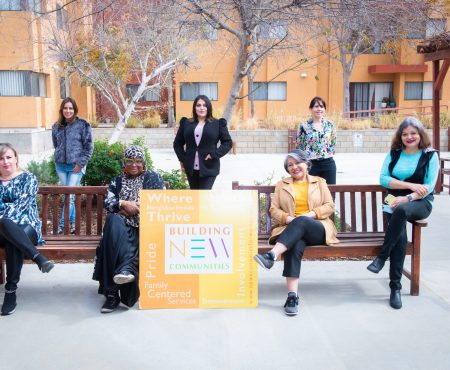A Valentine’s Day Feature
Come February, the store bells are ringing, the love birds are singing. Shelves are stocked with chocolates hearts and teddy bears, making some of us sick to our stomachs for the moosh and commercialism, and others giddy and excited with glee, depending on one’s outlook on life. Although many celebrate love daily, many of us know February 14th and the surrounding days as a time of heightened awareness on the concept of romance and other forms of LOVE, not just for romantic partners, but also for lovely singles, their family, friends and of course, ourselves as individuals.
Love seems to be quite simple on the surface, but anyone who’s actually experienced love will tell you that navigating the minefield of love is a tricky endeavor. What are the different ways in which you can show love to yourself and others? What’s the difference between love and lust? When does self-love turn into selfish love? These are a few questions that often haunt us when it comes to the matters of our heart. Source Link
Source Link
SELF-LOVE VS SELFISH LOVE:
Self-love is a big buzzword. It can be seen everywhere from magazine covers to Instagram hashtags. And since 2012, it’s just been growing. Unfortunately, so are the rates of depression and narcissism. The main reason for this is that people don’t understand the difference between self-love and selfishness. The lines between self-love and selfishness are often blurred, which makes it difficult to navigate the thin line between them.
At face value, the term “Self-Love” sounds like it only refers to loving yourself. But it’s so much more than that. Self-love is seeking improvement, taking care of yourself, being grateful and becoming the best version of yourself not just to better yourself, but also to be able to love others more. It involves setting healthy boundaries, being decisive and knowing your limits. Self-love can also be shown in expressing your faith, holding yourself accountable and sticking to your principles. This means being true to yourself and to the others around you by honoring the self and God.
Self-love in and of itself isn’t wrong. It’s only when it is warped to an extent that it becomes an insidious form of selfishness and narcissism… because even though you want to follow your heart, you can’t do it all the time. There has to be moderation and compromise. When the only priority is yourself, that’s selfishness. Solely caring about personal comfort, using others, considering yourself better than the rest and not sacrificing or taking responsibility are ways in which one expresses selfishness.
LOVE VS LUST:
Technology has made it easier than ever to find what we’re looking for. Or should we say, that it’s made it harder to find what we internally desire because it’s become tougher than ever to find real, enduring love. A rise in the use of dating apps and social media has completely changed the dynamics of romantic relationships, with more value being placed on physical features, wealth and status (in other words lust or materialism) than integrity, loyalty or the personality of the individual. Yet, it’s the latter that’s required to build and maintain a lasting connection.
It’s easy to mistake lust for love, since lust can be very intense and passionate. However it’s limited to the desirability of a person: Physical attraction intended to satisfy the sexual pleasures of the body. Lust is purely for the instant gratification of one’s ego and leads people to using each other. Infatuation, fantasies and strong sexual desire are forms of lust. People whose relationships are based on lust may not be compatible or know their partner well. Hence, such relationships usually burn out quickly, if not sooner than later.
It’s much trickier to define love, since it means many things to different people. At its most basic form, loving someone means you have their best interests at heart. There has to be a personal knowledge, deep connection, trust and loyalty built through selflessness and intimacy. Love is a process that needs effort and compromis, but true love lasts long, and despite every adversity, is something to hold onto.
To summarize, lust needs physical attraction, chemistry and ease. True love can also require these things, but has something more: real vulnerability and the willingness to give and desire the good of the other person, no matter how difficult it may be.  Source Link
Source Link
THE 4 KINDS OF LOVE:
Now that we’ve covered the differences between lust and love, let’s talk about the different kinds of love we experience at different stages in our lives.
EMPATHY (STORGE): FAMILIAL LOVE
Familial love is the first kind of love most widely experienced soon after we’re born. It could be termed as “like” more than love due to the very nature of it’s familiarity. Empathetic love (storge) is natural (present without any force or obligation) and emotive (fondness due to familiarity). This kind of love comes easily and naturally for the people we’re comfortable with who we can express ourselves around and feel familiar in their presence. The vulnerability and trust expressed in this form of love gives it the strength to thrive.
Due to its nature, familial love pays the least attention to traits deemed “worthy of love” and is able to overcome most obstacles. Thus, people come to expect it irrespective of their behaviour or distance. But storge is a dependency-based love which risks extinction if its needs aren’t being met. Hence, if these relationships aren’t strengthened maturely and dealt with organically, affection can be corrupted by jealousy, unpredictability, infidelity and excess control.  Source Link
Source Link
2. FRIENDSHIP (PHILIA): EMOTIONAL CONNECTION
The love between friends is called Philia, or the bond of friendship. Friendship is a connection between people who are somewhat close and have something in common.
Friendship is very different from the other forms of love since humans don’t need friendship in order to reproduce or survive. It’s something we freely choose, not something we’re biologically programmed to do. The beauty of friendship lies in the bonds it creates, in shared memories and in how it allows us to thrive in order to become better versions of ourselves. Ironically we don’t always necessarily consider friendship to be a form of love, even though it is.
Friendships aren’t without their dark sides though, such as clique culture, pride, group mentality, bullying, cultism and anti-authoritarianism. So it’s very important to maintain a balance and weed out toxic personalities from your friend circle.  Source Link
Source Link
3. ROMANTIC LOVE (EROS): SENSUAL DESIRES
Eros is love in the sense of romantic or sexual desire. Something we know better as “being in love”.
The most natural and palpable of all loves is eros. Remember the skipped heartbeats, butterflies in the stomach or the throbbing sensations all over your body when you spotted your crush?
Such romantic and sexual desires have a lot of power and produce the basal urges which dictate our behavior. Depending on how they’re tempered and channelled, they can be a force for both good and evil. There’s no denying that such desires make for a truly profound experience, add something special in our lives and allow us to express our love physically. However, when people fully submit themselves to it without moderation or use it as a justification for their selfishness, replacing the whole experience of love with lust, it can be a problem.
4. CHARITY (AGAPE): LOVE FOR OTHERS AND GOD
Charity refers to a love that exists only for the other person regardless of changing circumstances or situations. Due to its unselfish and altruistic nature, charity is often regarded as the biggest and most important form of love, as well the greatest virtue. The concept of love in charity focuses on the need to integrate and manifest the natural form of the other three loves, (since these three aren’t self-sufficient in themselves). God is the embodiment of charitable love, compassion, faith and sacrifice, which is necessary for the sustenance of the other forms of love. Charity is by extension, humility, resilience and self-actualisation that leads us towards devotion, purity, virtue and salvation in serving God and our fellow human beings to our maximum capacity. This is why it’s the highest measure of value and virtue in love.
 Source Link
Source Link
FINAL TAKE:
There’s no denying that to love and be loved adds more happiness and meaning to our lives, and that starts with you and me.
From all of us at MITH Magazine, a very Happy Valentine’s Day. May you step into deeper love this year for God, for others and for self.
- GET A LIFE-CHANGING MAKEOVER USING THESE TIPS! - May 1, 2021
- HOW TO DRESS FOR YOUR BODY TYPE - April 6, 2021
- Q-A WITH SOCIAL ETIQUETTE EXPERT- JAMILA MUSAYEVA - March 15, 2021











